American Catch
Air Date: Week of August 1, 2014
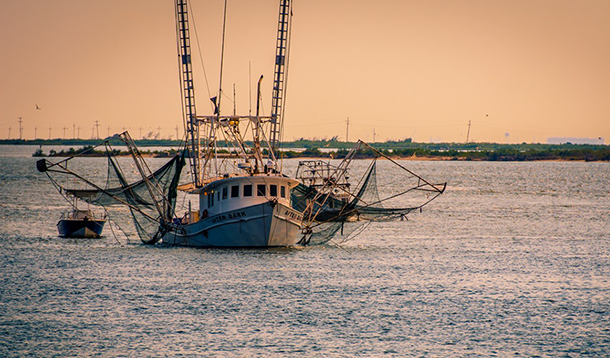
Shrimpers use fine-meshed nets, which can trap large amounts of bycatch. (Photo: Billy Metcalf Photography; Flickr Creative Commons 2.0)
Though commercial fishing is a multi-billion dollar business in America, much of the best US seafood heads overseas, while at home we consume cheap imported fish and shrimp. Author Paul Greenberg's new book, American Catch, describes what's gone wrong with our seafood supply and how it might be fixed. He discusses salmon, oysters and shrimp and the unraveling of America’s seafood industry with host Steve Curwood.
Transcript
CURWOOD: It's Living on Earth. I'm Steve Curwood. Something strange is going on in the U.S. seafood industry. Paul Greenberg, seafood expert and enthusiast, says Americans are eating less and less from their own oceans, and more imported fish. His new book, American Catch: The Fight for Our Local Seafood dives into the contradictions behind the industry and explains what can be done to restore America’s catch to American mouths. Welcome back to Living on Earth, Paul.
GREENBURG: Hey, thanks, Steve. Great to be back.
CURWOOD: Both Four Fish and American Catch, your latest book, explored the seafood industry. What sparked your interest in the subject?
GREENBURG: Well, originally I grew up in coastal Connecticut, and I actually got a boat when I was a really little kid back in the day—you know, something that you would never dream of doing with a young child. My dad would take me fishing on the weekends we would spend with him, and I think he took me fishing, not because he knew how to fish, because he didn't. He took me fishing because he kind of had this thought that that's what dads should do with their kids. So I kind of taught him, as he taught me when it came to fishing.
CURWOOD: Maybe that's why he went fishing with you.
GREENBURG: I think so. It was a real bonding experience. It was really about exploring something together.
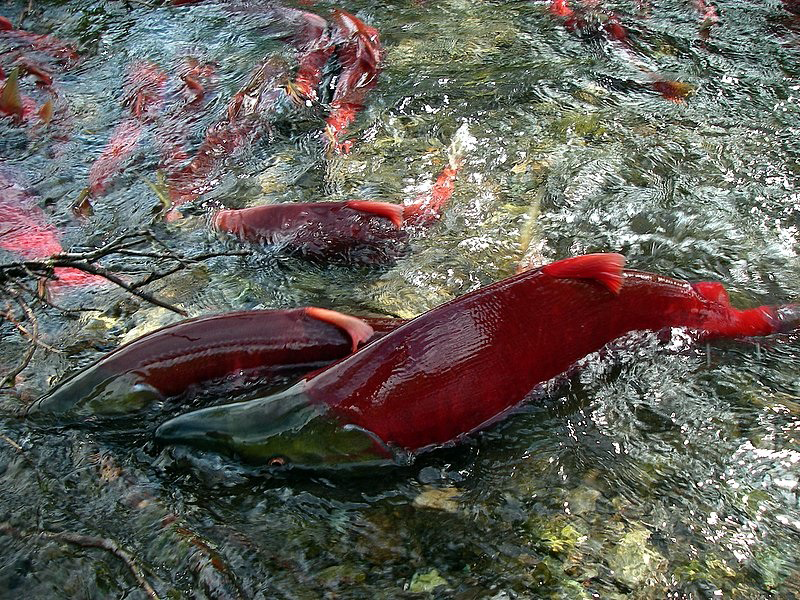
Alaska sockeye salmon. (Photo: Chris Pike; Flickr Creative Commons 2.0)
CURWOOD: Now this latest book uncovers—well, I think it’s a contradiction, really—it’s a rather strange contradiction in America's food industry. What's going on?
GREENBURG: The United States owns more ocean, or controls more ocean than any country on Earth, 2.8 billion acres, but yet more than 85 percent of our seafood is imported. That's really strange, but it's even stranger, because we're also exporting a third of what we catch, like three billion pounds a year. So it just made me feel like the whole thing was a little out of whack.
CURWOOD: Well this seems counterintuitive: I mean, why export so much fish?
GREENBURG: Right, why export so much fish when you seem to have some kind of deficit? Well the answer is: What we're kind of doing is low-grading our seafood supply. We are getting top-dollar for our very well-managed, wild American seafood, a lot of which goes to Asia, and in the other direction, you know, one fisherman said to me, “Americans just really aren’t hip to fish.” And as result, they're willing to pay bottom-dollar for things like tilapia or shrimp, because they’re not so interested in flavor, they're really just interested in a neutral piece of meat that they can put on a bun or deep-fry.
CURWOOD: In your book, you point to the huge export that we do of Sockeye salmon, the run that's up in Alaska and Bristol Bay. Talk to me about Bristol Bay Sockeye salmon.
GREENBURG: Bristol Bay is home to the largest Sockeye salmon run remaining in the world, and Sockeye salmon are really delicious, very nutritious fish. But what makes this area particularly worthy of an investigation is that, not only is it the site of one of the great last salmon runs on Earth, it's also the site of a proposed mine that would involve the digging out of about 10 billion tons of earth and ore that would be processed on-site, which is not a great thing for those kinds of fish. They really need pristine environments, and so having this threat of the super-large mine next to this super-large sockeye run is a problem.
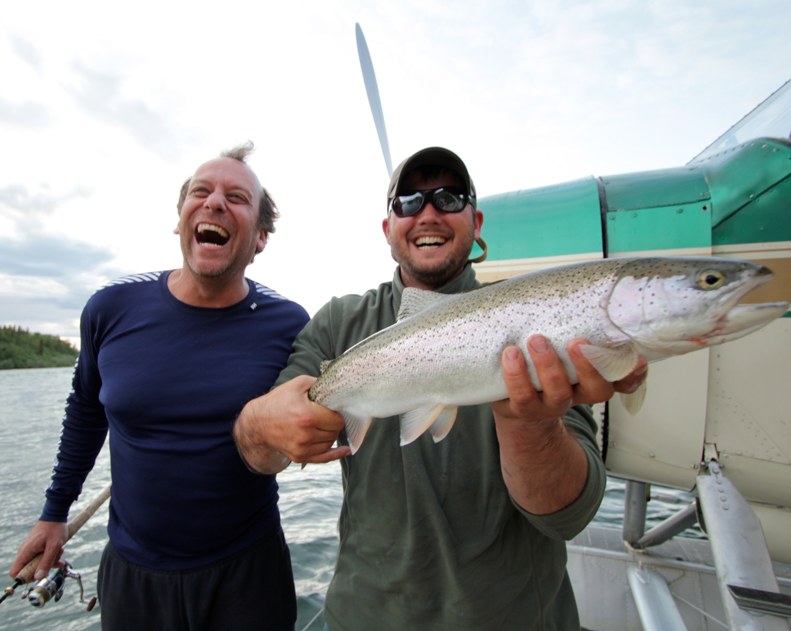
Paul Greenberg (left) fished for sockeye salmon in Alaska’s Bristol Bay. (Photo: courtesy of Paul Greenberg)
CURWOOD: Now, I gather that the Pebble Mine proposal is kind of on hold at this point. A lot of the backers have pulled out.
GREENBURG: Yes, one of the major partners in the Pebble partnership, Anglo-American, did pull out earlier last year, and the U.S. EPA has also started what's called a 404(c) action under the Clean Water Act, which would enable them to very severely restrict the kinds of industrial development that could happen in the bay. But it’s still a work in progress, and it's possible that a new administration could look the other way on all of this.
CURWOOD: What are the risks remaining for Sockeye salmon, and why don’t we get them in the lower 48 states?
GREENBURG: We do get them here in the United States, in the lower 48, though a lot of them are exported. Eighty percent of the Alaska salmon harvest is exported to other countries, and then of course there’s this weird wrinkle—that a portion of the Alaskan salmon harvest we catch at sea; we freeze it. We send it to China; it’s defrosted, filleted, boned, refrozen and then sent back to us twice frozen.
CURWOOD: Huh?
GREENBURG: Yeah, it's bizarre. The other day, actually, in Berkeley, I was having a coffee with Michael Pollan, you know, he's kind of like this turf to my surf, I suppose, and I said, “Michael, why is it that everybody is so obsessed with this story about the fish that we double freeze and send to China?” And very wisely, he said, “Well, it is a symptom of something much bigger which you’ve put your finger on, which is that there's something really weird with the seafood system.”
CURWOOD: In your book, American Catch, you highlight New York oysters, the Sockeye salmon from Alaska and Louisiana brown shrimp. And I want you talk about the shrimp because I was so surprised to learn that this is the most popular seafood here in the United States.
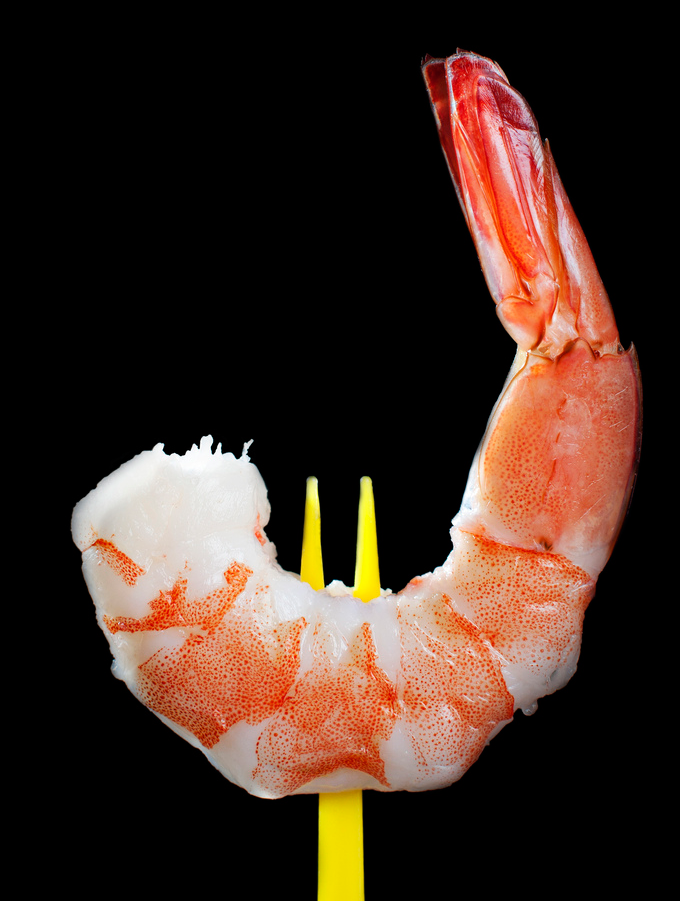
Shrimp has become America’s most popular seafood. (Photo: BillyBy; Flickr Creative Commons 2.0)
GREENBURG: Yes, shrimp, in general, we just go gaga for. We eat almost more than the next two most popular seafoods combined: that would be salmon and tuna.
CURWOOD: So why are we so obsessed with shrimp?
GREENBURG: It's the seafood that's the least like fish. Americans have gotten used to the mouth feel of meat and shrimp flesh is the way it is because it's kind of the precursor cells to the hard-shell, so they're harder and more resistant to tooth pressure, then say a flaky fillet of fish, but it also, and in its farmed form, it's not particularly flavorful. And you would think, “Oh, this would make it bad for consumers. They want something with flavor,” but it turns out that Americans actually don't really want a lot of flavor. They like kind of flavor-neutral things that they can deep-fry and put a lot of sauce on.
CURWOOD: Talk to me about the shrimp we import. Where do they come from?
GREENBURG: About half of the shrimp that we import is wild, and about half of it is farmed. And a lot of it is farmed in Asia. The first shrimp to be to domesticated was way back in the ’40s and ’50s. There was a scientist named Dr. Fujinaga from Japan, and he domesticated a kind of shrimp called the Kuruma Prawn. This was a creature that they used in a dish called “dancing shrimp”—and it was a shrimp that you peeled the carapace off while it was still alive, dipped it in sake and popped it in your mouth and let wriggle around in there. And that was that was its last dance so to speak.
CURWOOD: Oh, my.
GREENBURG: Yeah, but it was very popular amongst the Japanese aristocracy, and it was very expensive; it was the equivalent of about $100 dollars a pound. Now, Fujinaga, he didn't want to just grow shrimp for lots of rich people; he actually had this vision that shrimp could feed a lot of poor people. And the same time, he realized he should start with a high-value creature like the Kuruma and then expand outward from there. He had a lot of foreign graduate students. And they fanned out over many countries, and they started this sort of domestication wave where they domesticated several different species. And now probably 85 to 90 percent of the shrimp that we eat are one of two species. Most of it is White Lake Pacific Shrimp the other is a Tiger Prawn.
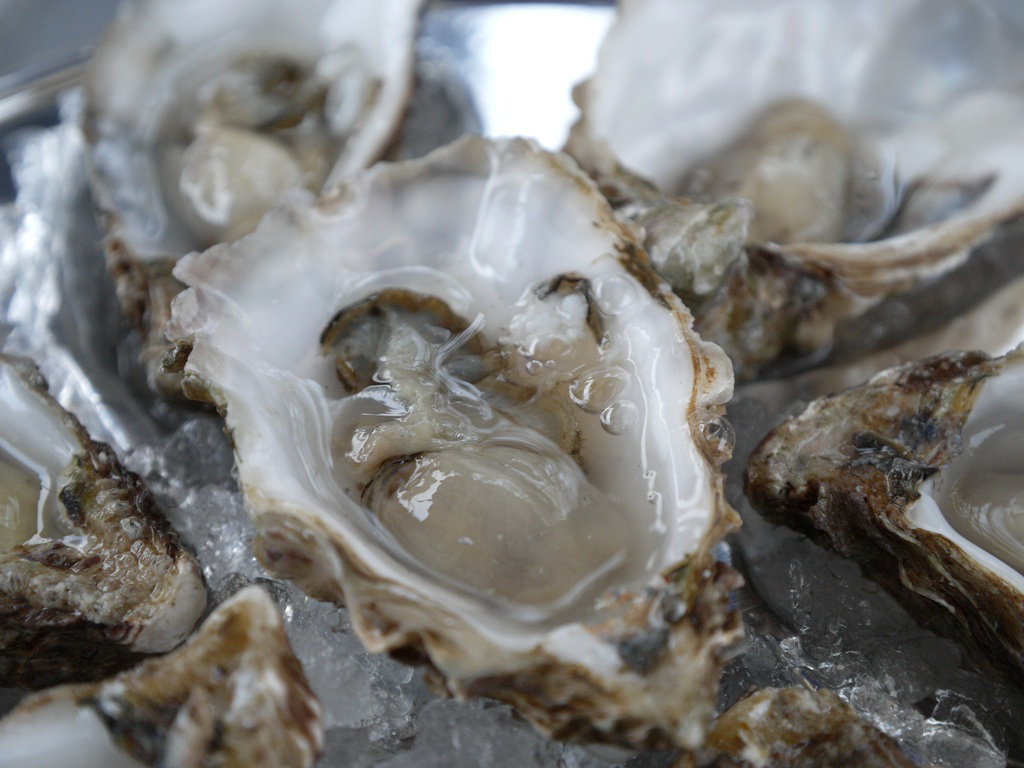
Oysters, once ubiquitous in New York Harbor, can now scarcely be found. (Photo: Farrukh; Flickr Creative Commons 2.0)
CURWOOD: Talk to me a bit about American shrimp. What about the Florida pink shrimp?
GREENBURG: That’s a pretty good tasting shrimp. I haven't done a huge amount of research into it, but I’ve certainly eaten it. And then, also in addition to Louisiana brown shrimp, there's a white shrimp that's caught in the gulf. And then we have the Pacific Spot prawn out in the west coast; there’s Oregon pink shrimp, which is quite good. There’re actually over 2,000 species of shrimp in the world. It’s just to sort of fate and choice that we’ve ended up eating mostly just two from the farm.
CURWOOD: Now, what's going on with the shrimp market in Louisiana?
GREENBURG: When I first started to write American Catch, the Deepwater Horizon BP spill had just happened. What I found when I talked to shrimpers and people down there was that, “Yeah, the oil spill was a disaster”. It was crazy, but what was really on their minds was the way that foreign shrimp was severely, severely depressing the price of their wild product.
CURWOOD: How does Louisiana shrimp taste compared to the stuff that gets sent from overseas?
GREENBURG: I think that Louisiana shrimp, well, particularly the brown shrimp that I had, have a distinct taste. Some people find it a little bit iodine-y. It's a little briny. It's just a broader spectrum of flavors. Somebody was asking me the other day to compare, say, wild Sockeye to farmed Atlantic salmon. The best I can come up with is that the melody was the same, but there were more notes—there is just more accents and highs and lows, and that's true of wild shrimp in comparison to farmed shrimp.
CURWOOD: A while back, Paul, we talked to you about the prospect of using oyster reefs to protect New York harbor. What happened to the oysters in New York to began with?
GREENBURG: New York used to have literally trillions and trillions of oysters. A single oyster can filter about 50 gallons of water a day, so you had the situation where you had this amazing living breakwaters that would turn over the entire water column of New York City regularly every few weeks or so. What first happened is that we ate them. The Dutch settlers, and then the English after them loved, loved, loved the oysters, and instead of throwing shells back in the water, we kept the shells in shore: ground them down, burned them down for lime, and basically mined out the ecological infrastructure of the harbor. After that, there was a very long period where there was an oyster farming industry, but then once we started dumping something like six million gallons of sewage a day into the water, that pretty much put an end to the oyster farming industry by the 1920s. So there are still some wild oysters left in the harbor, but they’re a fraction of their former selves, that is up until the last few years, which is kind of the story of the first chapter of the book.
CURWOOD: Well, when I was coming up as a kid, I was told to be very careful of oysters if you ate them, you know you could get very sick or you might even die.
GREENBURG: My father's generation grew up with a real fear of shellfish, and I remember my dad telling me when he was a medical resident at Bellevue one of the worst things that could happen would be somebody came in with oyster shellfish poisoning. But since the Clean Water Act came along in 1972, our waters have really gotten progressively cleaner and cleaner to the point where there's now enough dissolved oxygen in New York harbor to support oyster life and in the course of my research, I did find several places where oysters were growing again. But it'll be many, many years, if not forever, until you can eat a New York City oyster again.
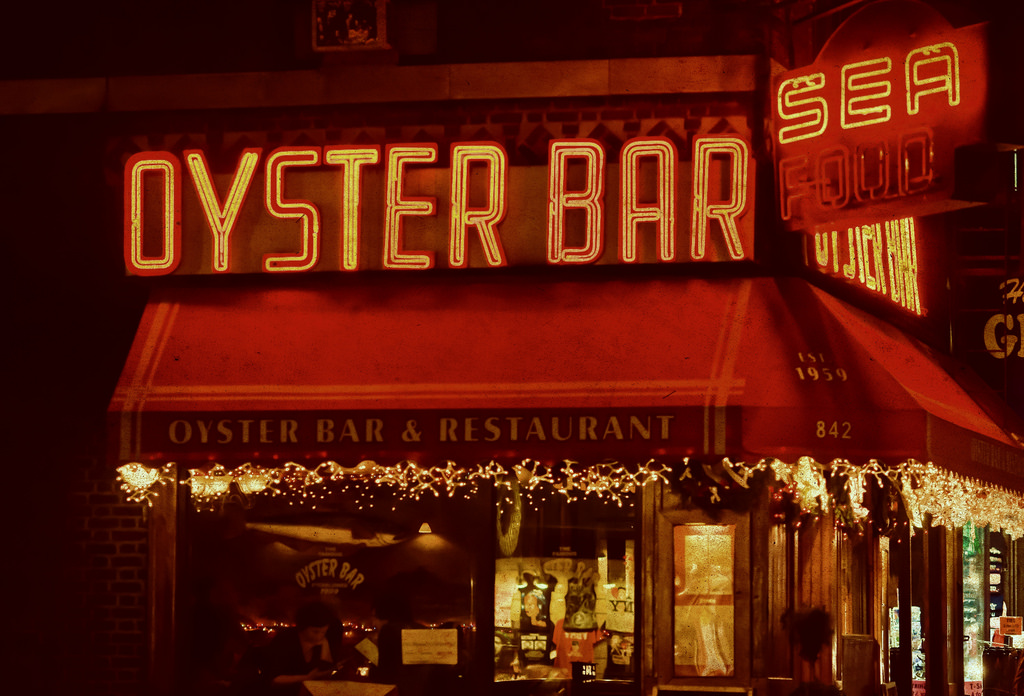
Oyster specials are again becoming commonplace. (Photo: Thomas Hawk; Flickr Creative Commons 2.0)
CURWOOD: Hey, Paul, I noticed over the past couple years you walk into almost any restaurant that thinks that it’s got some kind of snap, there will be a buck an oyster.
GREENBURG: I know, isn’t it great?
CURWOOD: Yeah.
GREENBURG: Do you eat oysters again now?
CURWOOD: Well, I certainly started eating them at a buck apiece.
GREENBURG: [LAUGHS] Right, what have you got to lose? It used to be, they would have amazing specials in New York, like there was this thing called the Canal Street plan where you could get all the oysters you could eat for sixpence and they were so big I think it was Swift, who said something like, that eating an American oyster was like eating a baby. But, of course in my childhood, oysters got really expensive, and you could see $3, $4, $5 dollar apiece oysters. In the last few years producers are finding there is both an appetite for oysters again, and there's also the good water for oysters again. We’re still not there—we’re only 14 percent of the circle capacity of oysters, but I think we could get to 100. And I personally would like to see a 25-cent oyster special sometime.
CURWOOD: So exactly how big were those oysters that Jonathan Swift the writer was talking about?
GREENBURG: Well they said it was big as a dinner plate. Most of the oysters that you and I eat in oyster bar are going to be like three years old, but what Swift was eating was oysters that would've been eight, 10, 15, 20 years old. Those are really, really old granddaddy oysters we just don't see anymore.
CURWOOD: What do you think is the most innovative idea that you came across in your research to fix some of the problems we had with our seafood?
GREENBURG: Well, I quite liked the work of Kate Orff and her idea called oyster-tecture, which was using breakwaters constructed out of oysters that would grow and create habitat as they created storm protection. The presence of an oyster reef has been found to potentially double the seafood carrying capacity of the near-shore. You know, other opportunities out there are things like, in order to relocalize the seafood that we do have, there’s a whole bunch of these things called community supported fisheries starting to arise. CSFs, they’re abbreviated, and what CSFs do is it's an opportunity for you to buy a share in a local fishery at the beginning of the season directly from the fisherman, so there are no middlemen involved, and then you get a delivery or you have a pickup scheduled of fish throughout fishing season, so it’s sort of a win-win. You get fish that you know where they're coming from; your fisherman gets money at the beginning of the season that supports the work that he's doing when he doesn't have cash on hand to start his business normally.
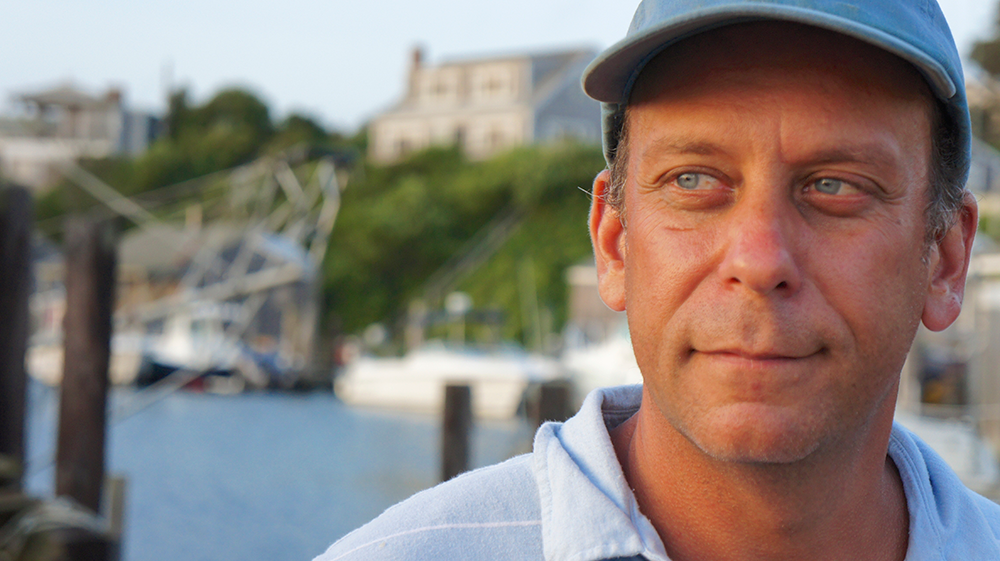
Paul Greenberg is the author of American Catch: The Fight for Our Local Seafood.
(Photo: courtesy of Paul Greenberg)
CURWOOD: Despite all the challenges you outline, your book really has this ring of optimism about it. So what’s your hope for the future of American seafood?
GREENBURG: American fisheries have been improving. Since the 1996 Sustainable Fisheries Act, we actually have seen the rebuilding of over 30 different stocks of fish. And I think we can positively continue in that direction. The next big things that we’re going to have to confront are infrastructure issues like, for example, restoring salt marsh—70 percent of which we’ve lost—restoring oyster reef—80 percent of which we’ve lost. But I think these are things we can do if we decide that seafood should be a larger part of the American dietary portfolio.
CURWOOD: Why restore salt marsh, aside from restoring fisheries? What other benefits might there be?
GREENBURG: Having marsh around cities, towns, is a really good way to start doing some natural storm protection. Salt marsh can absorb up to a foot of storm surge, and salt marshes are the best at sequestering carbon of any ecosystem on the planet. They sequester more carbon than an Amazon rainforest. So it’s kind of incredible actually—A: that we’ve destroyed so much and that, B: we’re so slow to realize what a key thing salt marsh restoration would do for our climate, for our seafood supply, and for our general environment.
CURWOOD: Now, what’s your advice for concerned consumers who would like to support sustainable American seafood?
GREENBURG: If possible, always try to ask if your seafood is American. Secondly, try to get yourself familiar with the kinds of fish you should find in American markets: sockeye salmon is an excellent example, the same thing with oysters, and I think lowering our shrimp consumption a little bit. From a farming perspective, shrimp stress the environment because you need to dig all these shrimp ponds in your coastal areas that cause the destruction of mangrove forests and they cause the erosion of coastal ecosystems. On a wild perspective, shrimp, because they’re, well, shrimpy, you need to use a very fine mesh net to seine them up and you’re likely to catch a lot of accidental fish and other creatures, which is collectively called bycatch. I’m not saying give up shrimp entirely, but, you know, you might even think about eating the bycatch, and there’s actually an operation out of Louisiana called Total Catch. You can purchase the bycatch that is caught by a shrimp vessel.
CURWOOD: What’s your next adventure, Paul?
GREENBURG: My next adventure is something I’m calling the “Omega principle.” I want to track the omega-3 fatty acid around the world, looking at both sort of how the supplement could change our bodies, but also how coming to an understanding of things like algae and phytoplankton could change the way we’re dealing with climate change.
CURWOOD: Really?
GREENBURG: Yes. To be continued.
CURWOOD: Alright. Stay tuned. Paul Greenberg’s latest book is called, American Catch: The Fight for Our Local Seafood. Paul, thanks so much for taking the time today.
GREENBURG: Thank you so much, Steve.
Links
Learn more about the author of American Catch, Paul Greenberg, on his website
Living on Earth wants to hear from you!
Living on Earth
62 Calef Highway, Suite 212
Lee, NH 03861
Telephone: 617-287-4121
E-mail: comments@loe.org
Newsletter [Click here]
Donate to Living on Earth!
Living on Earth is an independent media program and relies entirely on contributions from listeners and institutions supporting public service. Please donate now to preserve an independent environmental voice.
NewsletterLiving on Earth offers a weekly delivery of the show's rundown to your mailbox. Sign up for our newsletter today!
 Sailors For The Sea: Be the change you want to sea.
Sailors For The Sea: Be the change you want to sea.
 The Grantham Foundation for the Protection of the Environment: Committed to protecting and improving the health of the global environment.
The Grantham Foundation for the Protection of the Environment: Committed to protecting and improving the health of the global environment.
 Contribute to Living on Earth and receive, as our gift to you, an archival print of one of Mark Seth Lender's extraordinary wildlife photographs. Follow the link to see Mark's current collection of photographs.
Contribute to Living on Earth and receive, as our gift to you, an archival print of one of Mark Seth Lender's extraordinary wildlife photographs. Follow the link to see Mark's current collection of photographs.
 Buy a signed copy of Mark Seth Lender's book Smeagull the Seagull & support Living on Earth
Buy a signed copy of Mark Seth Lender's book Smeagull the Seagull & support Living on Earth

